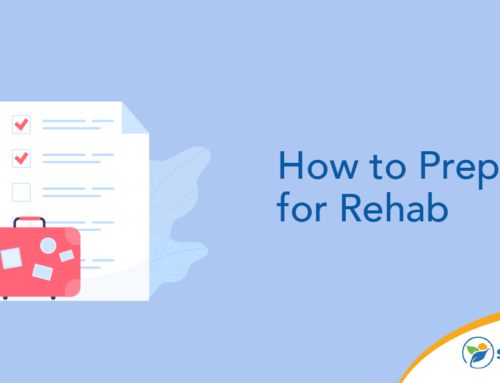Cognitive behavioral therapy (CBT) is an increasingly common short-term option for treating and managing mental health conditions. When you’re navigating challenges with your mental health or a stressful time in your life, speaking to a therapist can be incredibly valuable. In 2019, 9.5% of Americans reported receiving counseling or therapy from a mental health professional in the past 12 months.
Learn about the benefits of CBT, what conditions it’s used to treat and the goals of treatment. With this form of psychotherapy, you can use various techniques to change the way you think.
What Is Cognitive Behavioral Therapy?
Cognitive behavioral therapy is a type of psychological treatment that’s proven to be effective in managing mental health conditions like depression, anxiety, eating disorders and drug or alcohol abuse. This short-term type of psychotherapy is meant to give people tools and strategies for improving their condition and returning to a higher quality of life.
The skills learned through this form of talk therapy allow people to continue working on their mental health and overcoming triggers even after their therapy sessions come to an end. Referred to in one study as the gold standard of psychotherapy, CBT helps you become aware of negative or incorrect thought patterns.
Background on CBT
CBT was first created in the 1960s by Dr. Aaron T. Beck to help patients evaluate thoughts they had about themselves.
CBT is designed to take place for a limited period, sometimes in combination with other treatment like medications, depending on the mental health condition. However, CBT is effective for people without mental health conditions as well. It’s frequently used to provide people with the knowledge to navigate emotionally stressful situations without allowing them to become overwhelming.
What Is CBT Effective at Treating?
CBT is effective for treating various health and wellness challenges, including mental health conditions and addiction. Doctors frequently recommend CBT in combination with other treatments, such as medication, for mental health conditions like:
- Depression (MDD, PDD)
- Anxiety disorders (GAD, social anxiety)
- Eating disorders (anorexia, bulimia)
- Post-traumatic stress disorder (PTSD)
- Obsessive-compulsive disorder (OCD)
- Addiction (alcohol and substance abuse)
- Bipolar disorder
- Schizophrenia
While CBT can be helpful in learning how to manage these mental health conditions, it offers plenty of benefits to individuals handling emotional and behavioral challenges in their lives. Having someone to talk to and learning mindfulness techniques to change your thought patterns can be helpful when coping with an unusual level of stress. CBT can benefit people who are:
- Resolving relationship conflicts and improving their communication skills
- Coping with grief or loss
- Dealing with trauma from violence or abuse
- Experiencing chronic physical symptoms
- Coming to terms with a physical illness
Regardless of circumstances, CBT can benefit everyone by encouraging a more positive and productive way of thinking. It also promotes a deeper sense of self-understanding.
What Is a Cognitive Behavioral Therapy Session Like?
The structure of a CBT session is uniform across all practices and patient types. Sessions are usually 50-60 minutes long and are extremely structured and goal-oriented. Rather than allowing you to talk freely about your problems or feelings, CBT focuses on setting goals and taking action to achieve them. You may book anywhere from five to 20 consecutive sessions depending on the scale of the issue you want to address. This will also determine whether you attend appointments weekly or biweekly.
Whether you’re attending a therapy session for addiction or for mental health, you can expect a CBT session to look somewhat like this.
Mood Assessment
The first 15 minutes of your CBT session is usually spent completing a mood thermometer or questionnaire and reviewing material from the previous session. The questionnaire requires you to assess how you’re feeling at the present moment, but also how your emotions have affected your week leading up to the appointment. Using some sort of scale (1 to 5, Happy to Sad, or All the Time to Never), you’ll answer a variety of questions about how often you experienced certain emotions in the last seven days.
Review of Previous Discussion
Your therapist then reviews this information to see how you’ve been feeling and uses this insight to navigate the session. They touch on points brought up in your last session as a way to encourage you to share updates or developments.
Review of Any Homework
At the end of each session, your therapist may assign homework for the week ahead as a way to encourage you to practice the skills you learned in the session in your daily life. After the initial assessment and recap of last week’s discussion points, your therapist may ask whether you completed your homework, how it went, how it’s affected you and how you’re feeling about it now. Homework can include practicing mindfulness exercises, having a conversation with a loved one that’s central to your progress or refraining from repeating old patterns by making a decisive change.
Identification and Goal-Setting
Using the information gleaned in the appointment so far, your therapist engages you in discussion about moments during the week that were problematic for you in terms of your emotions or behavior. It’s important to be honest with your therapist about any difficult moments you had, whether that was facing a substance temptation or reacting negatively to a situation because of your anxiety.
Your therapist will hear these issues and discuss possible actionable steps you can take moving forward to avoid that situation or handle it differently. This may be through role-playing conversations, explanation of mental exercises or developing different habits.
Assigning Homework
Based on the goals you set for the week, your therapist assigns homework for you so you can move your mental health journey forward before the next session. They may email you mental exercises to practice a certain number of times each day or encourage you to develop mantras that you say to yourself in specific situations.
What Are the Goals of CBT?
The overarching purpose of CBT is to teach people that they can’t control every situation, but they can control how they think and react to these external factors.
CBT can be defined by SMART goals:
- Specific
- Measurable
- Achievable
- Realistic
- Time-limited
The ideal outcomes of CBT include:
- Promoting self-awareness and emotional intelligence
- Understanding how negative thoughts affect your feelings
- Reducing problematic symptoms by examining your current situation and making changes
- Developing self-control through physical and mental exercises
- Experiencing personal growth and preventing future moments of emotional distress
CBT Techniques
There are various CBT techniques your therapist may encourage you to try. Not every method is effective for every patient, but through trying various techniques, you and your therapist will determine which is most useful for managing your situation.
Mindfulness Exercises
Mindfulness is a key element of CBT, requiring you to become aware of your thoughts and feelings so you can take action to change them. Your therapist may assign you mindfulness exercises to practice daily to alter your natural thought pattern or to force a change in thinking when something triggers you.
Journaling
Journaling as a technique for recording thoughts or behavioral patterns may be encouraged by your therapist. Journaling can also be helpful in altering your thought patterns when used as a way to practice gratitude daily.
Relaxation and Stress Reduction Techniques
Strategies for reducing stress like deep breathing exercises, meditation or muscle relaxation are helpful tools provided as part of CBT.
Role-Playing
You and your therapist may role-play conversations to help you overcome fears about their outcome or gain confidence.
Exposure Therapy
Exposure therapy is sometimes an effective option for people with phobias. The therapist slowly exposes you to the phobia or encourages you to sit in the feeling of discomfort for incrementally longer periods.
Try CBT at Sunlight Recovery
If you’re struggling with negative thoughts and feelings and want to take decisive action for change, consider how cognitive behavioral therapy can help. At Sunlight Recovery, CBT is just one aspect of our wide range of treatment options.
Let our compassionate staff guide you on your journey to positive thought patterns and improved emotional awareness. Contact us today to get started.






